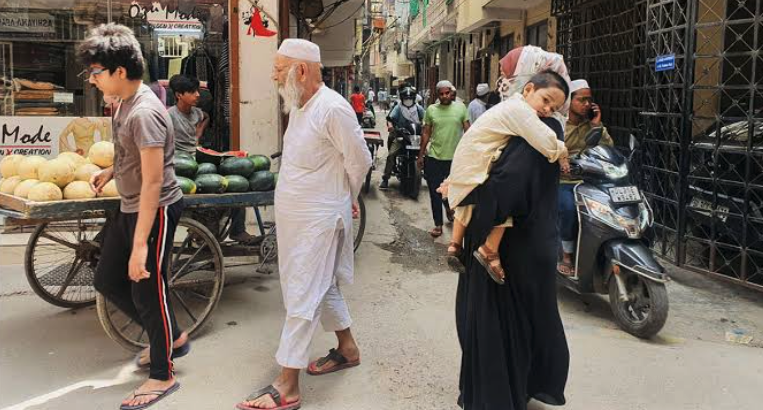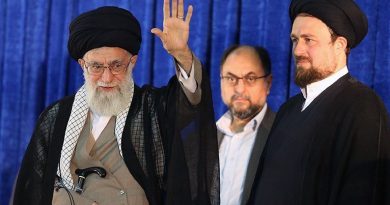OPINION: Beyond Blame—The Self-Imposed Isolation of Indian Muslims
Instead of hastily jumping to ideals of Hindu-Muslim brotherhood, perhaps we should first strive to humanize the Shia or Sunni next door—recognizing that they are as human as the Hindu in the neighboring town.
Blaming the West and the Cold War for the problem of Islamist terrorism and extremism is a convenient way of washing our hands of the issue. This narrative often ignores the fact that many Muslims themselves have normalised certain extremist ideas in everyday conversations. When a child is taught from an early age to view others as the other, some form of distance, hostility, and ultimately ghettoisation if not spatial , mental is bound to follow.
Let’s be clear: this ghettoisation is, to a large extent, self-imposed by Muslims who prefer to live “amongst their own.” But who is “their own”? This very idea contradicts the oft-repeated narrative that “we rejected Pakistan.” But what is Pakistan? It is not just a territory—it is an idea. An idea that Muslims of the subcontinent cannot coexist with non-Muslims, primarily Hindus, and therefore need a separate space to live and in essence explore our religiosity as a state and a community .
If that is so, how is ghettoisation any different? Isn’t it the same idea in practice—that Muslims cannot live among Hindus and must live solely among themselves? Various reasons are given for this self-imposed segregation—such as the reluctance of Hindus to rent or sell property to Muslims. But let us admit: in many so-called Hindu-dominated areas, Muslims do live—let’s not delve into their religiosity, though they often tend to be those who do not wear their religion on their sleeves, who have retracted religion to their homes, hearts, and mosques.
The claim that a Muslim cannot live among non-Muslims is a myth, and it ignores the broader sociological fact that segregation is not unique to Muslims. Other religious, ethnic, and linguistic groups in India also tend to cluster together, yet no one calls that oppression. People often prefer to live among those who share cultural and linguistic affinities. Why should that inherently be seen as exclusionary and wrong?
A large section of Muslims have migrated from Hindu-dominated areas to Muslim-dominated ones—such as Mumbra, Kurla, Mira Road in Maharashtra. These areas were initially chosen because they were on the periphery of Mumbai, relatively underpopulated, and affordable. Over the years, they transformed into Muslim-majority areas, derogatorily called “Mini Pakistan”—Mumbra in Maharashtra, Jamia Nagar in Delhi, Juhapura in Gujarat.
Initially, Muslims shifted to these spaces due to real threats of communal violence, but later, the migration became driven by perceived threats. However, a troubling development occurred: as Muslims moved into these spaces, they started cultivating a hyper-nationalistic and hyper-religious consciousness, and they didn’t see contradiction between the two, all the rage against the state and other communities got very conveniently channelised into fuelling sectarianism.
In these ghettoes, communalism of a specific intra-Muslim kind flourished—sectarianism became even more intense than Hindu-Muslim communalism. The Wahhabis, Barelvis, Deobandis, and Shias engaged in pitched ideological battles, throwing each other out of Islam every day and taking them in everyday to be kicked out the next and suddenly uniting with them in the face of the larger Hindu threat, This all happened in these very ghettoes.
I feel that in the study of Indian Muslim ghettoes, how sub-divisions among Muslims also find expression in ghettoisation is often missed. For example, there are Shia ghettoes or, to be apolitical, Shia settlements within the larger Sunni ghettoes in India. Shias usually don’t reside among Sunnis, as every year Sunnis take offence at their mourning of Hussain, the grandson of Prophet Mohammed. Similarly, Ahl-e-Hadith to a large extent live near Ahle Hadees masjids, and the same is partially true for every major sect.
I remember a friend narrating an incident from Mumbra—the largest Muslim ghetto in India. He lived in one of its best buildings. During Muharram, some Sunnis in the building objected to the mourning rituals of Shias. Instead of asserting their right to peacefully observe their faith, some residents demanded that the Tablighi Jamaat’s halqas (religious circles) also be stopped.
In the same friend’s building, there was a man who never greeted others with salaam. When asked why, he replied, “I don’t greet kafirs,” referring to other Muslims who did not align with his sect. Let me reiterate this is one of the best buildings in the ghetto.
Recently, I met a man who recounted his experience at an Eid-ul-Adha prayer. The imam there declared that if the animal sacrifice was not performed by a Sunni Imam, it would be invalid. He also insisted that the skin of the sacrificed animal should be donated only to “Our Masjid.”
Let us not deceive ourselves: sectarianism is real and deep-seated within Muslim communities. Instead of hastily jumping to ideals of Hindu-Muslim brotherhood, perhaps we should first strive to humanize the Shia or Sunni next door—recognizing that they are as human as the Hindu in the neighboring town.
A humanist lens demands that we first dismantle our internal sectarianism before talking of communal harmony at large. Only when we see each other as human—across sects, faiths, and communities—can we hope to create a society not based on hatred but on larger and real Harmony.
Disclaimer: Views expressed by writers in this section are their own and do not reflect Milli Chronicle’s point-of-view.



